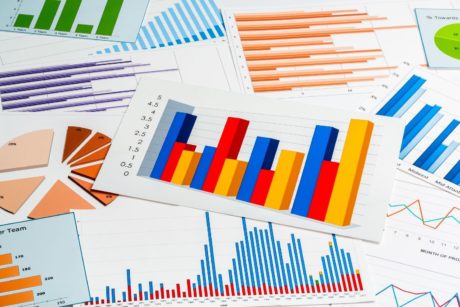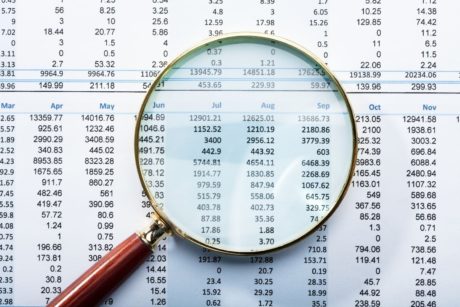This course is designed for those interested to learn the basics of Power Pivot in Excel as a big data analysis tool, recognize the essential steps in relationship and integration and identify the best practices in Power Pivot modeling. Read more.
Lenny has over 15 years combined experience in financial planning and analysis (FP&A), financial reporting and modeling, and compliance auditing.
Access all courses in our library for only $9/month with All Access Pass
Get Started with All Access PassBuy Only This CourseAbout This Course
The course is presented in four parts.
First, a brief introduction to Power Pivot and discuss reasons it has become more versatile than the conventional pivot table:
- Excel spreadsheet has a limit of 1 million rows, while Power Pivot can connect to over 1 million rows of data. So no limit on the data sources.
- Power Pivot can combine all data sources into one pivot table. So no more VLOOKUP().
- A plethora of DAX formulas in Power Pivot. Plus the formulas can be reused!
Second part is to demonstrate basic maneuvers on how to:
- map all dimension tables and fact tables together
- incorporate data from ALL sources into 1 pivot table
Third, we demonstrate 6 fundamental DAX formulas in Power Pivot to get you started in building advanced models for effective analytics, including:
- CALCULATE
- SUMX
- RELATED
- SAMEPERIODLASTYEAR
Last, we culminate the course with the best practices in Power Pivot modeling, including:
- Use Measures (or Calculated Fields) over Calculated Column
- Table naming conventions, and
- DAX format
Learning Objectives
- Discover Power Pivot as the big data analysis tool
- Identify the best practices in Power Pivot modeling
- Recognize Power Pivot’s essential steps in relationship and integration
- Discover 6 essential DAX formulas to get you started in Power Pivot formula writing
- Explore differences between a calculated column and a calculate field
Prerequisites and Advanced Preparation
- Basic Excel knowledge
Our Promise to You
By the end of this course, you will have learned using Power Pivot in Excel.
10 Day Money Back Guarantee. If you are unsatisfied for any reason, simply contact us and we’ll give you a full refund. No questions asked.
Get started today and learn more about making big data analysis easy with the help of Power Pivot.
Get started today and learn more about making big data analysis easy with the help of Power Pivot.
Course Curriculum
| Section 1 - Introduction | |||
| Introduction | 00:00:00 | ||
| Background | 00:00:00 | ||
| Author | 00:00:00 | ||
| Purpose | 00:00:00 | ||
| Downloadable Resources - Power Pivot | 00:00:00 | ||
| Section 2 - Introduction To Power Pivot | |||
| Introduction To Power Pivot | 00:00:00 | ||
| Mapping 1 | 00:00:00 | ||
| Mapping 2 | 00:00:00 | ||
| Section 3 - Integration In Power Pivot | |||
| Table Names | 00:00:00 | ||
| Relationship | 00:00:00 | ||
| Dashboard 1 | 00:00:00 | ||
| Section 4 - Essential DAX Formulas To Get You Started | |||
| DAX Formula 1 | 00:00:00 | ||
| DAX Formula 2 | 00:00:00 | ||
| DAX Formula 3 | 00:00:00 | ||
| DAX Formula 4 | 00:00:00 | ||
| Section 5 - Best Practices In Power Pivot Modeling | |||
| Best Practice 1 | 00:00:00 | ||
| Best Practice 2 | 00:00:00 | ||
| Dashboard 2 | 00:00:00 | ||
| Section 6 - Takeaways | |||
| Course Takeaway | 00:00:00 | ||
| Next Course | 00:00:00 | ||
About This Course
The course is presented in four parts.
First, a brief introduction to Power Pivot and discuss reasons it has become more versatile than the conventional pivot table:
- Excel spreadsheet has a limit of 1 million rows, while Power Pivot can connect to over 1 million rows of data. So no limit on the data sources.
- Power Pivot can combine all data sources into one pivot table. So no more VLOOKUP().
- A plethora of DAX formulas in Power Pivot. Plus the formulas can be reused!
Second part is to demonstrate basic maneuvers on how to:
- map all dimension tables and fact tables together
- incorporate data from ALL sources into 1 pivot table
Third, we demonstrate 6 fundamental DAX formulas in Power Pivot to get you started in building advanced models for effective analytics, including:
- CALCULATE
- SUMX
- RELATED
- SAMEPERIODLASTYEAR
Last, we culminate the course with the best practices in Power Pivot modeling, including:
- Use Measures (or Calculated Fields) over Calculated Column
- Table naming conventions, and
- DAX format
Learning Objectives
- Discover Power Pivot as the big data analysis tool
- Identify the best practices in Power Pivot modeling
- Recognize Power Pivot’s essential steps in relationship and integration
- Discover 6 essential DAX formulas to get you started in Power Pivot formula writing
- Explore differences between a calculated column and a calculate field
Prerequisites and Advanced Preparation
- Basic Excel knowledge
Our Promise to You
By the end of this course, you will have learned using Power Pivot in Excel.
10 Day Money Back Guarantee. If you are unsatisfied for any reason, simply contact us and we’ll give you a full refund. No questions asked.
Get started today and learn more about making big data analysis easy with the help of Power Pivot.
Get started today and learn more about making big data analysis easy with the help of Power Pivot.
Course Curriculum
| Section 1 - Introduction | |||
| Introduction | 00:00:00 | ||
| Background | 00:00:00 | ||
| Author | 00:00:00 | ||
| Purpose | 00:00:00 | ||
| Downloadable Resources - Power Pivot | 00:00:00 | ||
| Section 2 - Introduction To Power Pivot | |||
| Introduction To Power Pivot | 00:00:00 | ||
| Mapping 1 | 00:00:00 | ||
| Mapping 2 | 00:00:00 | ||
| Section 3 - Integration In Power Pivot | |||
| Table Names | 00:00:00 | ||
| Relationship | 00:00:00 | ||
| Dashboard 1 | 00:00:00 | ||
| Section 4 - Essential DAX Formulas To Get You Started | |||
| DAX Formula 1 | 00:00:00 | ||
| DAX Formula 2 | 00:00:00 | ||
| DAX Formula 3 | 00:00:00 | ||
| DAX Formula 4 | 00:00:00 | ||
| Section 5 - Best Practices In Power Pivot Modeling | |||
| Best Practice 1 | 00:00:00 | ||
| Best Practice 2 | 00:00:00 | ||
| Dashboard 2 | 00:00:00 | ||
| Section 6 - Takeaways | |||
| Course Takeaway | 00:00:00 | ||
| Next Course | 00:00:00 | ||



